Rubus leucodermis, Whitebark Raspberry
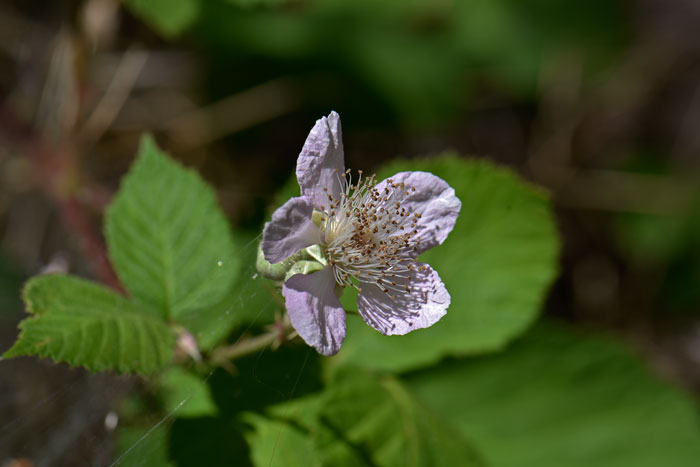
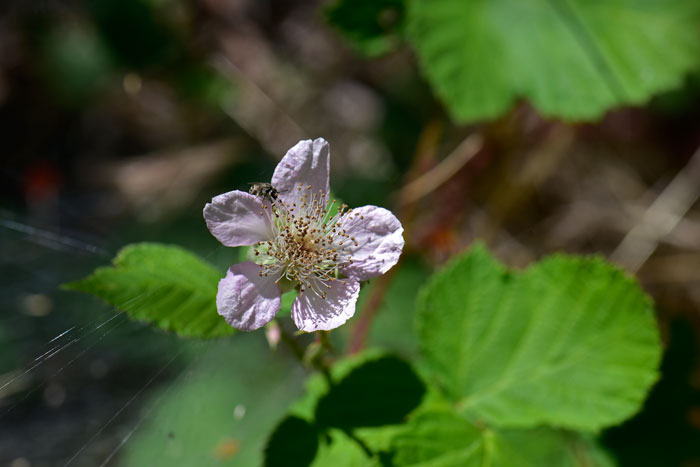
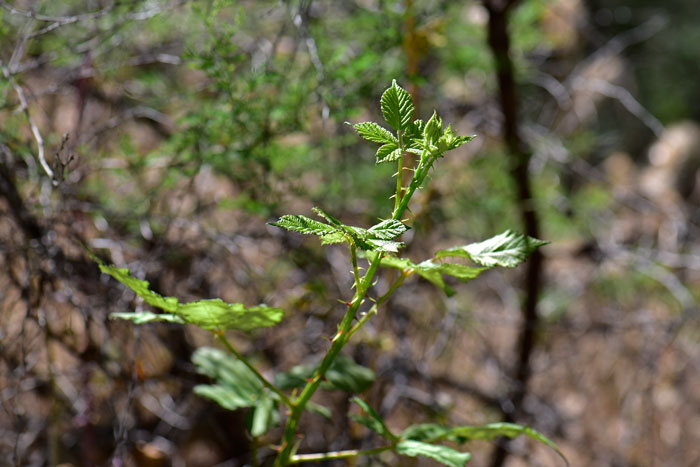
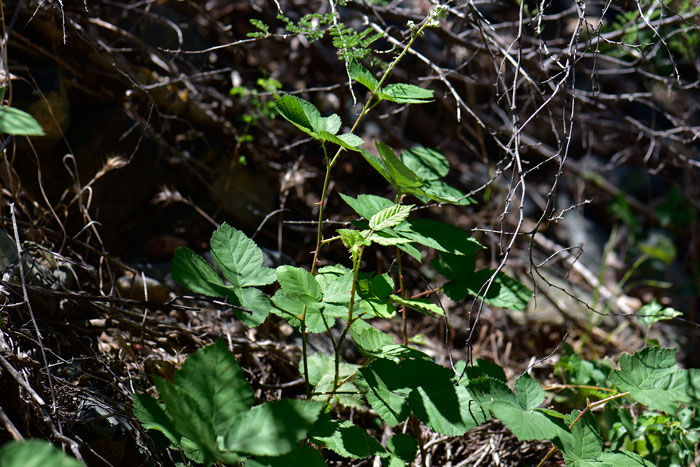
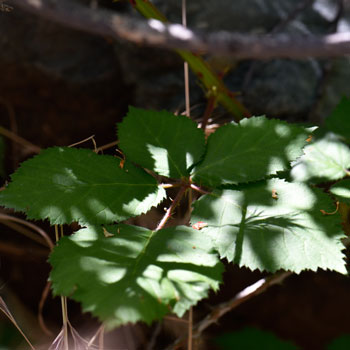
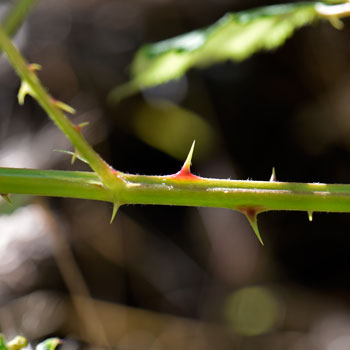
Scientific Name: Rubus leucodermis
Common Name: Whitebark Raspberry
Also Called: Black Raspberry, Blackcap Raspberry, Blackcap
Family: Rosaceae or Rose Family
Synonyms: ()
Status: Native
Duration: Perennial
Size: Usually 6 or 7 feet; maximum 9 feet.
Growth Form: Subshrub, vine; plants arched, ascending or erect brambles; stems with many prickles thorns slightly recurved or recurved.
Leaves: Green, white-tomentose below (abaxial); deciduous; pinnately compound, 3 to 7 leaflets, ovate, shallow lobes, margins serrate or doubly-serrate; linear stipules; petioles up to 2 inches;
Flower Color: White, pinkish; flowers 1 to 3; sepals longer than petals, petals oblanceolate-elliptic; pistils up to 15; fruits raspberry-like, red-purple to black.
Flowering Season: May to June in Arizona; April to July in Washington.
Elevation: About 5,500 feet; 150 to 7,000 feet in California.
Habitat Preferences: In upper deserts along perennial and semi-perennial creeks and riparian areas.
Recorded Range: Rubus leucodermis is found in the western ½ of the United States, British Columbia, Canada and Alaska; AK, AZ, CA, ID, MT, NM, NV, OR, UT, WA. In Arizona it is found in the northwest part of the state excluding Yavapai county and in Gila county. Whitebark Raspberry is also native to northern Mexico.
North America & US County Distribution Map for Rubus leucodermis.
U.S. Weed Information: No information available.
Invasive/Noxious Weed Information: No information available.
Wetland Indicator: In North America Rubus leucodermis has the following wetland designations: Alaska, FAC; Arid West, FACU; Great Plains, FAC; Western Mountains, Valleys, and Coast, FACU.
FAC = Facultative, occur in wetlands and non-wetlands
FACU = Facultative Upland, usually occur in non-wetlands, but may occur in wetlands.
Threatened/Endangered Information: No information available.
Arizona, Nevada and Utah each have 5 species of Rubus, in California there are 14 species, New Mexico has 8 species and Texas has 17 species. All data is approximate and subject to taxonomic changes.
There are 3 varieties in Rubus leucodermis;
Rubus leucodermis var. bernardinus, Whitebark Raspberry, (CA);
Rubus leucodermis var. leucodermis, Whitebark Raspberry, (AK, AZ, CA, ID, MT, NM, NV, OR, UT, WA);
Rubus leucodermis var. trinitatis, Whitebark Raspberry (CA).
Comments: Rubus leucodermis has important food and shelter value for small mammals, birds, butterflies and native bees. It is a very large genus that includes the commercial raspberries and blackberries.
In Southwest Desert Flora also see the closely related New Mexico Raspberry, Rubus neomexicanus.
Rubus leucodermis has been used for a variety of food types by North American indigenous peoples.
Bella Coola Food, Bread & Cake, Berries formerly dried in cakes and used for food.
Cahuilla Food, Beverage, Berries soaked in water to make a beverage.
Coeur d'Alene Food, Fruit, Berries eaten fresh.
Klamath Food, Dried Food, Berries dried for later use.
Pomo, Kashaya Food, Winter Use Food, Berries canned.
See ethno-botanical uses at Native American Ethnobotany, University of Michigan, Dearborn.

